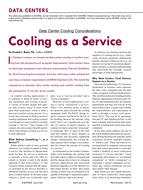Describes the application of ARX models for real-time model-based diagnosis in heating, ventilating, and air conditioning (HVAC) systems. Model-based diagnosis is a technique capable of finding possible diagnoses based on behaviour description and interconnections of the separate components contained in the whole HVAC system. It can best be understood as the interaction of observation and prediction. On one side there is the actual device, on the other side the model, which can make predictions about the behaviour of the device. A significant difference between the actual observations and the model predictions indicates the monitored device has a malfunction. The behaviour of the system is defined using ARX models. An ARX model of the complete system is used to detect a degrading performance of the system. After the system model has indicated a possible malfunction, the model-based diagnostic process will try to determine a diagnosis using the ARX models of the separate components present in the system. The fault detection process and the model-based diagnosis process are captured in a programmable real-time environment that controls the selection of the models and the use of the model-based diagnostic algorithm. This diagnostic environment has been tested on a variable-air-volume (VAV) system simulation with data sets with known and unknown faults.
KEYWORDS: year 1997, Calculating, heating, ventilation, air conditioning, air handling units, variable volume air conditioning, monitoring, failure, detecting
Citation: Symposium, ASHRAE Trans. 1997, vol.103, part 1
Product Details
- Published:
- 1997
- File Size:
- 1 file , 1.4 MB
- Product Code(s):
- D-16456


